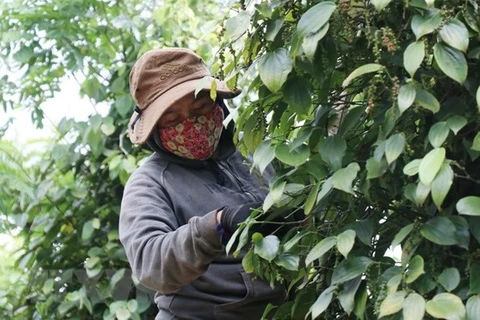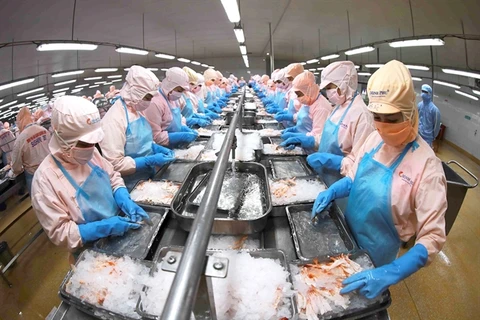HCM City (VNA) – Vietnam is seeking ways to revive the billion-dollar pepper industry which has been struggling against unfavourable weather conditions and the COVID-19 pandemic for over the last several years.
Vietnamese producers are likely to face a shortage in raw pepper for processing and export in 2022 due to global undersupply, according to a representative from the International Pepper Community (IPC). Demand is bouncing back sharply around the world as restaurants and dining services are allowed to reopen. Meanwhile, global output fell well short of the demand because, except for Brazil that is now in the middle of the harvest season, supply dries out in other major producers such as Indonesia and India.
The Vietnam Pepper Association (VPA) is considering importing pepper from neighbouring countries to ensure sufficient supply for domestic processing, according to Chairman Nguyen Hai Nam. Last year, Vietnam’s pepper imports from Cambodia soared 111 percent compared to 2020, he said.
Pepper output in Cambodian provinces bordering with Vietnam can reach 30,000 tonnes per year. Despite the fact that the number only accounts for one-tenth of Vietnam’s output, it can help ease the shortage in the coming time.
Data from the VPA shows that pepper was sold at 90,000 VND (3.98 USD) per kg last year, almost doubling the previous year’s 48,000 VND per kg, after constant reduction over the last few years.
Hoang Phuoc Binh, Chairman of the Chu Se Pepper Association, said to sustainably develop the pepper industry, the government and concerned ministries and agencies must provide accurate, timely updates on areas under the spice in Vietnam and the globe, and other information regarding processing, distribution and consumption to help producers develop suitable strategy.
In 2021, Vietnam exported 260,000 tonnes of pepper for some 950 million USD, down 9 percent in volume and up 44 percent in value against 2020./.

Pepper export revenue forecast to reach 1 bln USD this year
Earnings from pepper export are forecast to reach 1 billion USD this year thanks to growing prices and demand, especially in China.























